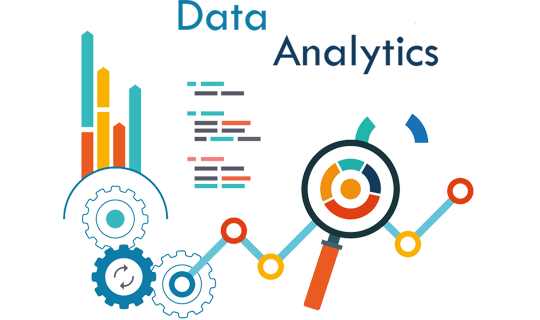Data has become a household word and standard practice in the industry, especially over the past three decades. But humans have a long history of data logging. Early forms included tally marks on cave walls or stone boards, often tracking food inventory. This article will outline the main types of data analytics in business and their benefits.
What is Data Analytics in business?
Examining data to find answers, recognize trends, and draw conclusions is known as data analysis. When data analysis is used in business, it is often referred to as business analytics. The purpose of Business Analytics is to process and analyze data based on business problems to propose solutions and directions to help them make the best decisions for development.

4 Main Types of Data Analysis
The four main types of data analysis can also be applied to financial data. Each type of financial data analysis serves a different purpose and provides different insights, and they can be used together or separately depending on the specific needs and goals of an investor or a financial institution.

Descriptive Analytics
Descriptive analysis is the simplest type of analysis and the foundation upon which the others are built. It allows you to pull trends from raw data and briefly describe what happened or is currently happening. This type of analysis summarizes and describes the main features of financial data, such as historical stock prices, sales trends, and market trends. It is used to get a general understanding of the financial data and to identify any outliers or anomalies.
Diagnostic Analytics
The diagnostic analysis addresses the next logical question, “Why is this happening?” Finding the source of a problem or issue is the main goal of the data analysis technique known as diagnostic analytics. It uses data and analytical tools to identify the underlying causes of problems, issues, or trends in an organization or system. This information is then used to make informed decisions, improve processes, and optimize performance. By using diagnostic analytics, organizations can optimize their operations, increase efficiency, and achieve their goals more effectively.
Predictive Analytics
Predictive analytics is used to make predictions about future trends or events and to answer the question “What might happen in the future?” This type of analysis uses statistical techniques and machine learning to make predictions about future financial events or results, such as stock prices, stock performance, and market trends. By analyzing historical data in tandem with industry trends, you can make informed predictions about what the future may bring for your company.
Prescriptive Analytics
Finally, the prescriptive analysis answers the question, “What should we do next?” Prescriptive analysis suggests practical solutions by considering all relevant circumstances. This type of analysis can be especially helpful when making data-driven decisions. It combines optimization algorithms, predictive models, and financial expertise to identify the best investment strategy.
Benefits of Data Analysis in business

- Personalize customer experience: Businesses collect customer data from a variety of channels, including physical retail, e-commerce, and social media. By using data analytics to create comprehensive customer profiles from this data, businesses can better understand customer behavior to provide a more personalized experience.
- Business decision-making: Data analytics can help businesses make better decisions and prevent financial loss. Predictive analytics can suggest what might happen in response to changes to the business, and regulatory analytics can show how businesses should respond to these changes.
- Enhanced Security: All businesses face data security threats. Organizations can use data analytics to diagnose the cause of past data breaches by processing and visualizing relevant data.
- Minimize risk: Risk is everywhere in business. These include theft by customers or employees, uncollected receivables, employee safety, and liability. Data analytics can be used by a company to more accurately assess risks and put precautions in place.
- Improve operational efficiency: Organizations can improve operational efficiency through data analytics. Data about the supply chain can be gathered and analyzed to identify production bottlenecks or delays as well as to forecast potential future issues.
Conclusion
Data analytics aids people and businesses in securing their data in a world that is more and more dependent on information and the gathering of statistics. A set of raw data can be turned into instructive, educational insights using a range of tools and methods, which aid in decision-making and lifecycle management.

